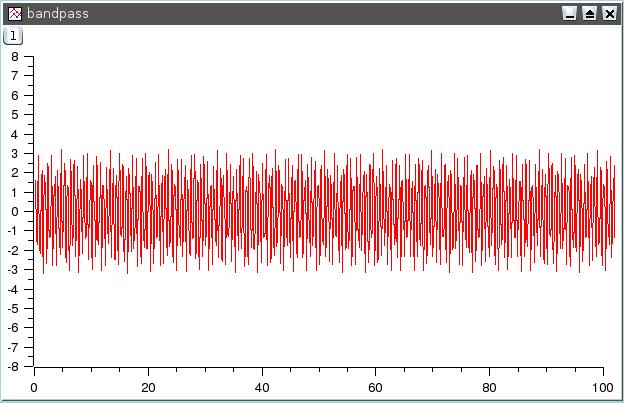Filtering of data curves
In this section, it will be assumed that you have the following data curve:
This signal has a power spectrum with high and low frequencies. We can analyze this by doing a FFT on the data curve, this leads to the following figure:
The newt sections will show the influence of the different filters on this data curve.
FFT low pass filter
This filter allows to cut the high frequencies of a signal. You just have to select the cut-off frequency of the filter. Let us assume that we want to keep the frequencies below 1 Hz, we will obtain:
The power spectrum of this new signal shows that the frequencies below 1 Hz have been kept.
FFT high pass filter
This filter allows to cut the low frequencies of a signal. You just have to select the cut-off frequency of the filter. Let us assume that we want to keep the frequencies above 1 Hz, we will obtain:
The power spectrum of this new signal shows that the frequencies above 1 Hz have been kept.
FFT band pass filter
This filter allows to cut the low and high frequencies of a signal. You just have to select the high and low cut-off frequencies of the filter. Let us assume that we want to keep the frequencies between 1.5 and 3.5 Hz, we will obtain:
The power spectrum of this new signal shows that only the frequencies at 2 and 3 Hz have been kept.
FFT block band filter
This filter allows to keep the low and high frequencies of a signal. You just have to select the high and low cut-off frequencies of the filter. Let us assume that we want to remove the frequencies between 1.5 and 3.5 Hz, we will obtain:
The power spectrum of this new signal shows that only the frequencies below 1.5 Hz and above 3.5 Hz have been kept.









